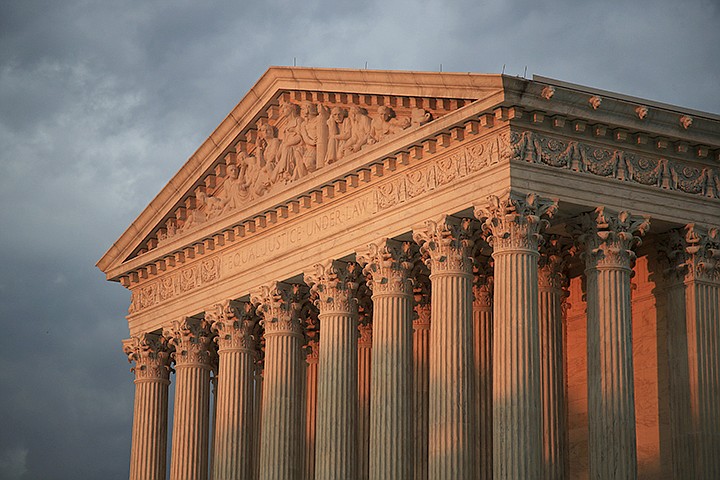When the 2018 Supreme Court term began in October, all eyes were on the confirmation of the newest justice, Brett Kavanaugh. By the time the term wrapped up in June, the center of attention was Chief Justice John Roberts.
And that's where the focus is likely to stay as long as the court continues in this configuration. So far, the retirement of Justice Anthony Kennedy last summer has not had the effect of turning the court into a reliable forum for 5-4 decisions with the conservatives on top. Instead, Roberts seems to be embracing the role of the centrist-as he did most prominently in this term's marquee case, blocking (at least temporarily) President Donald Trump's administration from adding a citizenship question to the 2020 census.
Not every swing voter is the same, however. Roberts is extremely different from Kennedy. And Kennedy was markedly distinct from Justice Sandra Day O'Connor, who held the centrist balance-of-power role for almost 25 years.
To see where the court is now-and where it's going-it is important to understand what's behind Roberts's approach, and how it differs from what came before.
O'Connor was a highly pragmatic balancer. She was the last justice to have had significant legislative experience, rising to become majority leader in the Arizona State Senate. O'Connor had an instinctive sense for where the median U.S. voter stood on an issue-and she tried to put the court in that same spot. Her middle-of-the-road opinions often frustrated ideologues on both sides, because they were so clearly based on compromise rather than abstract principle.
Kennedy, in contrast, loved grand principles-like "dignity," his personal favorite, which he adapted from international human-rights doctrine and Catholic thought. His swing decisions tended to ring with high rhetoric, not pragmatism. What made him a centrist was that sometimes his principles led him to the left (as in his signature gay marriage decision) and sometimes to the right (as in a series of states' rights cases where he trumpeted the "dignity" of the state).
Roberts is neither a compromiser nor an advocate of abstract values. Rather, he is a disciple of the doctrine of judicial restraint as influenced by the late Justice Felix Frankfurter in an academic and judicial career that spanned the first six decades of the 20th century.
Over the years, judicial restraint has been deployed by both liberals and conservatives. Typically, and embarrassingly, whichever side has five votes on the Supreme Court forgets about restraint, and the side that has only four trumpets the idea that the court should not take activist decisions that strike down legislation.
Roberts seems to be a true believer. In practice, he emphasizes the strand of judicial restraint that warns that the courts should avoid seeming like a partisan political actor, substituting its judgment for that of Congress and intervening in favor of one side.
This approach explains Roberts's census case opinion. He sided partly with the court's four conservatives, holding that in principle there's nothing wrong with the Trump administration's adding a citizenship question. But he didn't want to be seen rubber-stamping the secretary of commerce's preposterous explanation for why the citizenship question was being added. Doing so would have made the decision look partisan. So Roberts voted with the liberals in a part of his opinion that told the administration to go back and give a new, honest explanation.
The same judicial restraint principles also explain Roberts's decisive fifth vote-and his opinion-in the partisan gerrymandering case, the other most noteworthy decision this past term.
Frankfurter always warned that the court should avoid getting involved in deciding cases about gerrymandering, which he considered "political questions" that could not be decided without favoring one party or another.
Roberts, in declining to create a right against partisan gerrymandering, without a doubt believed he was saving the court from future decisions that would be highly partisan either in reality or in perception.
The takeaway is that Roberts will be a centrist mostly when he is trying to channel Frankfurter's spirit and avoid judicial partisanship. What that will mean for the court's biggest upcoming cases-like DACA and abortion rights-is a topic court watchers will be returning to for the next several years.

